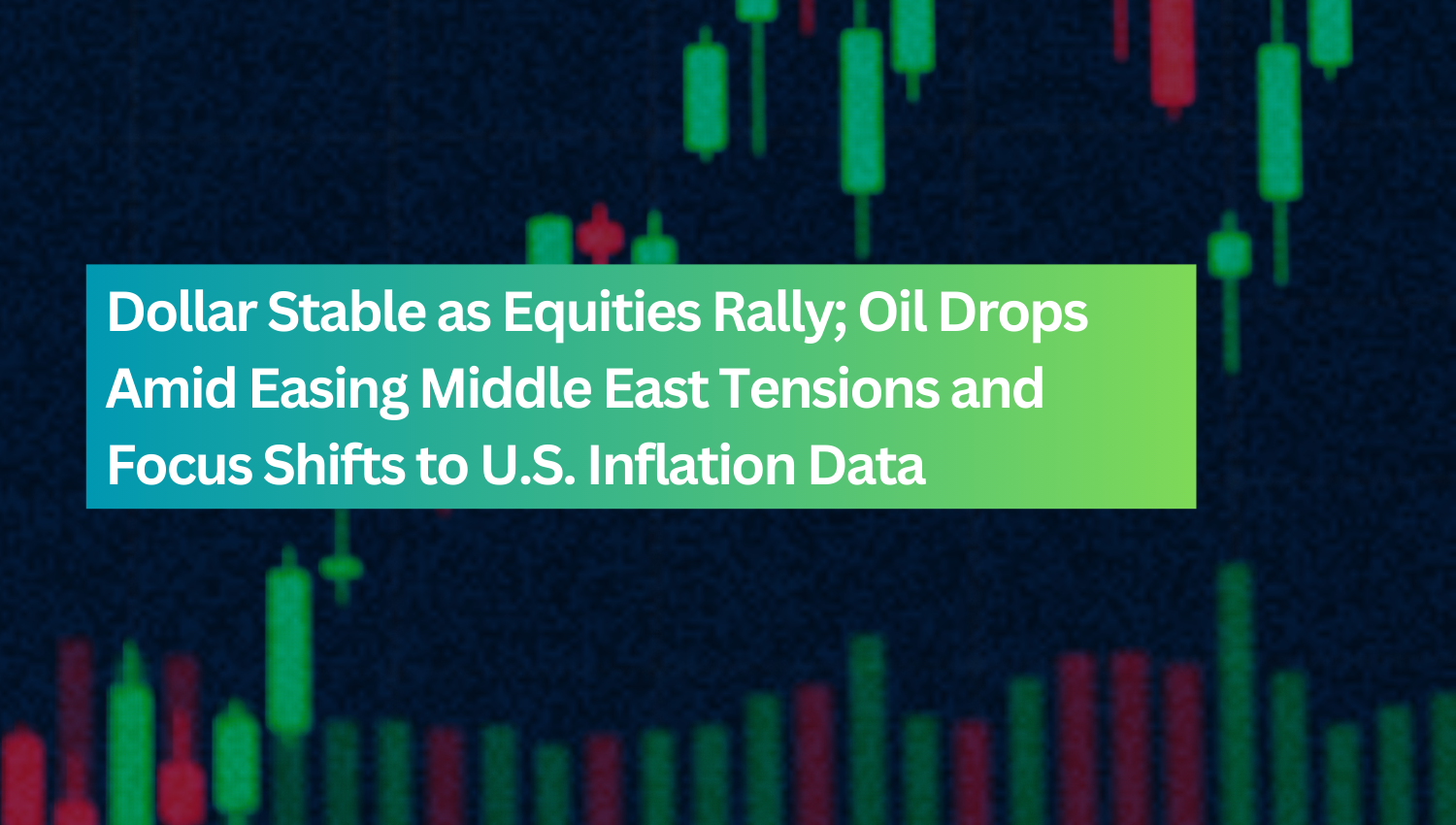Macro Outlook

Dollar Index Stable as Equities Gain
The dollar index remained relatively steady as U.S. equity markets rallied, driven by falling oil prices and a decline in 2-year Treasury yields ahead of the upcoming U.S. consumer inflation report on Thursday. This market stability reflected investor optimism as easing concerns over geopolitical risks in the Middle East supported risk-on sentiment.
Oil Prices Drop on Ceasefire Hopes
Oil prices fell nearly 4% after a Hezbollah leader signaled openness to a potential ceasefire, easing fears of prolonged supply disruptions from the Middle East. The decline in crude prices negatively impacted the Norwegian krone, making it the weakest performer among G-10 currencies, as Norway’s oil-linked economy felt the pressure from lower energy prices.
China’s Economic Outlook and Limited Stimulus
China’s reassurances about meeting its annual growth targets did little to excite markets, as the country refrained from introducing new stimulus measures. Investor sentiment remained cautious, with concerns over China’s economic momentum continuing to weigh on risk-sensitive currencies like the Australian dollar.
Mixed Sentiments from U.S. and European Policymakers
In Europe, Bundesbank President Joachim Nagel acknowledged a downward trend in eurozone inflation but emphasized that the European Central Bank should remain vigilant. Germany offered some positive economic news, with industrial output in August rising by 2.9%, surpassing forecasts.
In the U.S., Federal Reserve officials expressed mixed views. Fed Governor Adriana Kugler indicated a willingness to support further rate cuts if inflation trends lower, while Atlanta Fed President Raphael Bostic pointed out a cooling labor market despite steady job creation. The U.S. also reported a significant reduction in its trade deficit for August, contrasting with Canada’s larger-than-expected trade shortfall, marking its sixth consecutive monthly deficit.
Bond Market and Equity Performance
U.S. equity markets saw a 0.66% gain in the S&P 500, driven by strength in the tech sector as lower yields provided a boost to growth stocks. In the bond market, movements were mixed, with the yield curve steepening as the spread between 2-year and 10-year Treasury yields widened by 3 basis points to +6.3 basis points.
Commodity Markets React to Easing Geopolitical Risks
The decline in oil prices helped alleviate inflationary concerns, contributing to a sharp drop in gold prices, which fell 1.04%—its largest decline in over a month. Copper prices also slumped, declining 2.4% as investors remained skeptical about China's economic support measures and the global demand outlook.
Muted Currency Movements Amid Mixed Global Sentiment
In the currency markets, movements were mostly subdued, reflecting a mixed global macroeconomic landscape. EUR/USD saw a minor dip of 0.01%, despite positive industrial data from Germany and cautious commentary from Bundesbank’s Nagel. USD/JPY rose slightly by 0.02%, while GBP/USD edged up by 0.01%, maintaining the broader stability in the dollar index. The Australian dollar struggled, dropping 0.30% against the greenback due to concerns over China’s restrained stimulus measures. Currency pairs involving the yen, such as EUR/JPY and GBP/JPY, recorded marginal gains of 0.05% and 0.09%, respectively, while AUD/JPY fell 0.22%, reflecting the risk-averse sentiment affecting commodity-linked currencies.
Outlook: Focus on U.S. Inflation and Rate Expectations
The outlook for currency markets is closely tied to the upcoming U.S. inflation data, which will shape expectations for the Federal Reserve’s next steps. A continued easing of inflation could support the case for rate reductions, potentially weighing on the dollar. Conversely, if inflation proves more persistent than expected, the dollar could see renewed strength, particularly given the U.S. economy's resilience compared to other major regions. The euro's performance will depend on the ECB’s response to inflation trends and signs of further economic strength in the eurozone, such as ongoing growth in German output. The Norwegian krone remains vulnerable to fluctuations in oil prices, while the Australian dollar could face additional downside if China's economic outlook remains clouded by limited policy support. Geopolitical developments and central bank communications will continue to drive market volatility in the coming weeks.

